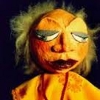Search the Community
Showing results for tags 'fandango'.
-
For those of you who would like to join a fun Summer project other than the bi-monthly competition and the soliloquy marathon (non excluding them, in case you want super extra fun), I launch the YC Baroque Fandango Workshop. OBJECTIVE: To create the ultimate fandango for string quartet by joining together bits composed by whoever wants to contribute. GENERAL STRUCTURE OF A BAROQUE FANDANGO: It is quite straightforward. It is basically continous variations upon a I - V harmonic ostinato. The ostinato is broken now and again by episodes built around some other harmonic chord progression. BASIC HARMONIC PATTERNS: - Main fandango pattern: alternating i - V as you want. To fix ideas, if the key is D min, it would be Dmin - Amaj over and over and over. - Secondary pattern: Alternating iV - V (Gmin - Amaj). This is not to be repeated over and over; it is used to break up the main pattern for say, some bars. - Episodes: You can use different progressions. The episodes are not repeated over and over, just to break up fandango pattern for, say, up to 16 bars. Progressions you can use: - Romanesca: III - VII - i - V (Fmaj, Cmaj, Dmin, Amaj) - Folia: i - V - i - VII - III - VII - i - V (Dmin, Amaj, Dmin, Cmaj, Fmaj, Cmaj, Dmin, Amaj) - Descending fourth: i - VII - VI - V - Cycle of fifhts: Starting either on i or in V. - Pachelbel canon - Any other progression you fancy. Just don't stray away from standard baroque harmony, and don't make them modulating (the episodes can have an inner modulation, but they must finish in either D min, A maj or any other chord that would allow linking with the main ostinato). RULES: - INSTRUMENTS: String quartet. I have considered piano and violin (it would allow to write duet, or just for piano solo - or for violin solo if you are into soliloquys...) Let me know if you'd rather write for piano and violin. - KEY: Dmin, no modulations (you might modulate in episodes, but remember to go back home) - TIME SIGNATURE AND TEMPO: 3/4 allegro (quarter note at about 120 bpm). 3/4 6/8 alternation is possible and idiomatic for the dance. - STYLE: Stick to plain baroque harmony to guarantee a modicum of unity. This is not about coming up with fancy progressions or modernist harmonic systems; it is about rhythmic, melodic and texture invention within standard tonal harmony. Of course, the core harmonies can be spiced up with chromaticism, chord substitutions of interpolations, extended triads, suspensions and the like, just do not go wild with those. - CADENCES: There are none, the music flows continuously. Just end your bit in either D min or A maj (or any other chord that can link to those), but without pausing the rhythmic activity. MINIMUM AMOUNT OF MUSIC TO SUBMIT: There is no minimum, it is up to you to submit just four bars or four pages. Work only with the main i - V, on an episode, whatever takes your fancy. You can submit separate bits composed in different days, as many as you like. DEADLINE AND EDITION: I will be doing the edition, joining the different contributions. I'm available until September the first, so let's schedule the deadline around mid-august. The 20th would be fine, it will give me plenty of time. FORMAT: I use Sibelius 6. If you use Finale, attach the Finale file but convert it to Sibelius 6, if it is possible. Write your name (or screen name) on your entries. INSPIRATION: Antonio Soler: Antonio Soler: Fandango for Harpsichord - YouTube Domenico Scarlatti: Domenico Scarlatti, Fandango. - YouTube Luigi Boccherini: Rameau: (This one strays away from the model, since it is a binary baroque dance and the episode/fandango role is kind of reversed) Mozart: That is about everything I can think of. Let's fandango!

